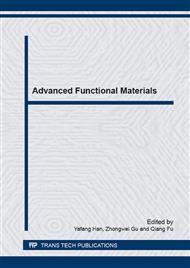p.643
p.649
p.656
p.661
p.668
p.675
p.684
p.690
p.695
Fabrication and Evaluation of an Amino Modified Epoxy Coating for Anti-Scouring and Anti-Corrosion Application
Abstract:
Excellent performance is necessary for compressor blade when aircraft engine serves in harsh environment, where it will go through scouring from jet-stream and extraneous sand, shaking of blades and corrosion from corrosive medium, taking moisture, salt, SO2 for example. Due to the shortage of scouring resistant and anti-corrosion property, shedding of damaged coating is a fundamental reason for the breakdown of aircraft engine blades, which is also the technique bottleneck that hinders the engineering application of compressor blades. Aiming at such problems, an amino modified epoxy coating which performed excellent scouring resistent and anti-corrosion property was fabricated on blades in this paper. Physical properties, anti-corrosion performance, abrasion resistant profiles and scouring resistant test were comprehensively evaluated. Results showed that the coating displayed a high hardness (pendulum hardness 0.9), overlong pot life, well anti-corrosion performance and excellent scouring resistant property. Pot life extends from 8h which is that of common coatings to 36h, so that it is benefit to large scale coating in engineering application. The anti-corrosion performance is similar to traditional aluminizing/inorganic silicate protect coatings, and abrasion resistant property is superior to common protect coatings. Moreover, scouring resistance performance is 3~4 times that of traditional coatings. Hence, such protective coatings could ensure the long lasting of blades protection.
Info:
Periodical:
Pages:
684-689
Citation:
Online since:
March 2015
Authors:
Keywords:
Price:
Сopyright:
© 2015 Trans Tech Publications Ltd. All Rights Reserved
Share:
Citation:


